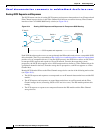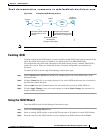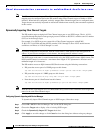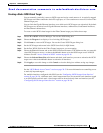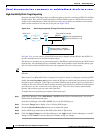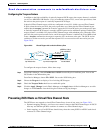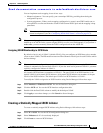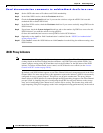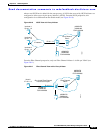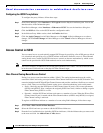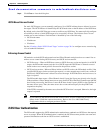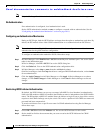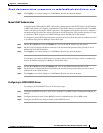
Send documentation comments to mdsfeedback-doc@cisco.com.
20-12
Cisco MDS 9000 Family Fabric Manager Configuration Guide
OL-6965-03, Cisco MDS SAN-OS Release 2.x
Chapter 20 iSCSI Configuration
Configuring iSCSI
Dynamic Mapping
When an iSCSI host connects to the IPS module using the iSCSI protocol, a virtual N port is created for
the host. The nWWNs and pWWNs are dynamically allocated from the switch’s Fibre Channel WWN
pool. The IPS module registers this N port in the Fibre Channel SAN. The IPS module continues using
that nWWN and pWWN to represent this iSCSI host until it no longer has a connection to any iSCSI
target through that IP storage port.
At that point, the virtual Fibre Channel host is taken offline from the Fibre Channel SAN and the
nWWNs and pWWNs are released back to the switch's Fibre Channel WWN pool. These addresses
become available for assignment to other iSCSI hosts requiring access to Fibre Channel SANs. When a
dynamically mapped iSCSI initiator has multiple sessions to multiple Fibre Channel targets, each
session can use the same pWWN and nWWN as long as it uses the same node name in the iSCSI login
message.
Initiator Identification
By default, the switch uses the iSCSI node name to identify the initiator.
An iSCSI initiator is identified in one of two ways:
• By iSCSI node name—An initiator with multiple IP addresses (multiple interface cards—NICs or
multiple network interfaces) has one virtual N port, assuming it uses the same iSCSI initiator name
from all interfaces.
• By IP address—A virtual N port is created for each IP address it uses to log in to iSCSI targets.
Static Mapping
Use the static mapping method to obtain the same nWWN and pWWNs for the iSCSI host each time it
connects to the IPS module.
Static mapping can be used on the IPS module to access intelligent Fibre Channel storage arrays that
have access control and LUN mapping or masking configuration based on the initiator's pWWNs and/or
nWWNs.
Note If an iSCSI host connects to multiple IPS ports, each port independently creates one virtual N port for
the host. If static mapping is used, enough pWWNs should be configured for as many IPS ports to which
a host connects.



